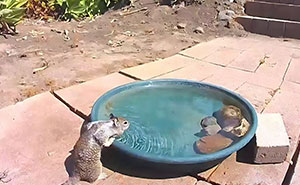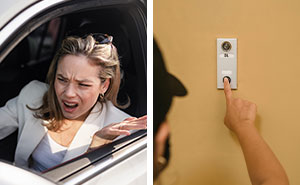Our team at Bored Panda has collected photos from all over the internet, featuring some of the most genius ideas that shops have ever implemented. Avocado ripeness detectors and cozy spaces for owners to leave their pets in are just the tip of the iceberg. Scroll down to check them out! We got in touch with Matt Johnson, PhD, a marketing psychology expert specializing in topics such as consumer psychology and serendipity, to learn about what customers value the most while shopping. Read on for Bored Panda’s interview with Johnson, including his thoughts on why not every store is going to rush to embrace all of these smart designs. However, personalization also plays a growing role here. Shoppers appreciate tailored experiences, from product recommendations to layout designs that reflect their preferences. “The sensory environment also matters: things like clear signage, pleasant lighting, and even how produce feels and smells all contribute to making the experience enjoyable. Innovations like avocado ripeness detectors or refillable detergent stations appeal to customers because they enhance convenience and sustainability, both of which are becoming increasingly important. Ultimately, customers appreciate anything that makes their shopping trip faster, more engaging, and aligned with their values,” Johnson explained. “Smart, customer-friendly store ideas—like avocado ripeness detectors or refillable detergent stations—may seem like no-brainers, but their adoption is often slower due to a mix of inertia and cost. For one, change is expensive. Even if a new feature would delight customers, it requires upfront investments in infrastructure, training, and marketing, which can be risky for stores with thin profit margins,” the expert told us. “Additionally, many businesses prioritize short-term gains over long-term customer satisfaction. They may be wary of adopting innovations unless there’s a proven return on investment.” If you’re interested in learning more about marketing psychology, feel free to take a look through Johnson’s branding and human nature blogs. You might also be interested in watching his TEDx talk on YouTube, about serendipity in the age of advanced AI. To put it simply, a positive experience and a good atmosphere are going to make it more likely that you’ll be a loyal, returning customer. Why would you not return to a place where you feel comfortable, happy, and catered to? A negative shopping experience, on the other hand, is likely to push you away. And, if you have easily accessible alternatives in your local area, you’ll probably consider shopping at a competitor’s store. At least to see what they offer and how it compares. Consumers are (arguably, at least partly) rational, and they’ll generally opt for stores that are closer, cheaper, offer better quality products and more variety, and offer other considerations. Furthermore, by catering to one group of customers, you might push others away because they dislike your creative ideas. You have to look at what will make the average local shopper happy (or, well, happier), and refine their experience based on that. If you enjoy eating avocados but keep picking under- and over-ripe ones, a ripeness detector at your local supermarket can be invaluable. Similarly, if you have a beloved dog you take everywhere, then you’d probably look favorably upon shop owners who implement pet-friendly solutions. Consider other things that go into making a worthwhile shopping experience, too, like the lighting, music, signage, and color palette. One store might opt for unintrusive ambient music, while another might cater to pop music fans. One shop might go for the most efficient LED lights possible to keep costs down and ensure maximum visibility, while another retailer might opt for warmer lighting to make their customers feel more cozy. Some might choose to use fewer signs to make their customers lose their way so they buy more random things, while others want more, clearer signs so as to not waste anyone’s time. If you’ve been shopping for a while, your willpower is likely to be depleted a bit: you’ve been making a ton of decisions about what (not) to buy. So, your body and brain are craving something sweet. Hence the checkout snack counters. (We’re not judging anyone, though. We’ve fallen prey to this tactic more than a few times. But that’s why we don’t go shopping on an empty stomach anymore.) However, Gadsby notes that, in the United Kingdom, customers generally look left and then right when they enter a store, so you might want to consider putting the freshest, brightest, and most vibrant produce on the left side of the entrance. How easy is it to order and pay for the items you’re looking for? Is it a twenty-four-step process or something more convenient? How good are the deals compared to shopping in person? How trustworthy is the vendor and the platform? How quickly will your products arrive and is it marginally better than physically going to a store near you? On the other hand, what do your local shops do really well that you’d love to see elsewhere, too? Let us know what you think in the comments section! Follow Bored Panda on Google News! Follow us on Flipboard.com/@boredpanda! Please use high-res photos without watermarks Ooops! Your image is too large, maximum file size is 8 MB.











































































































































































